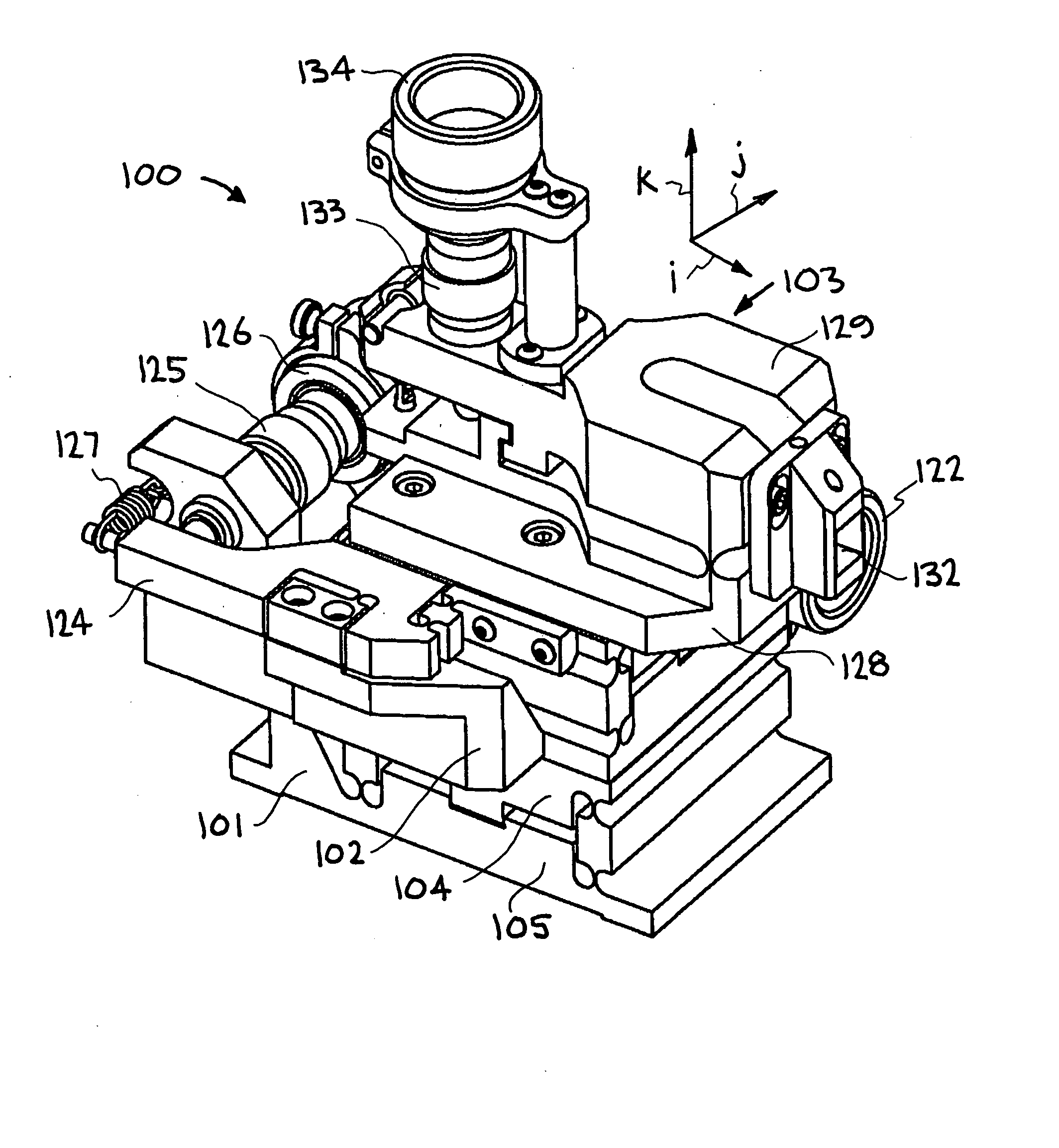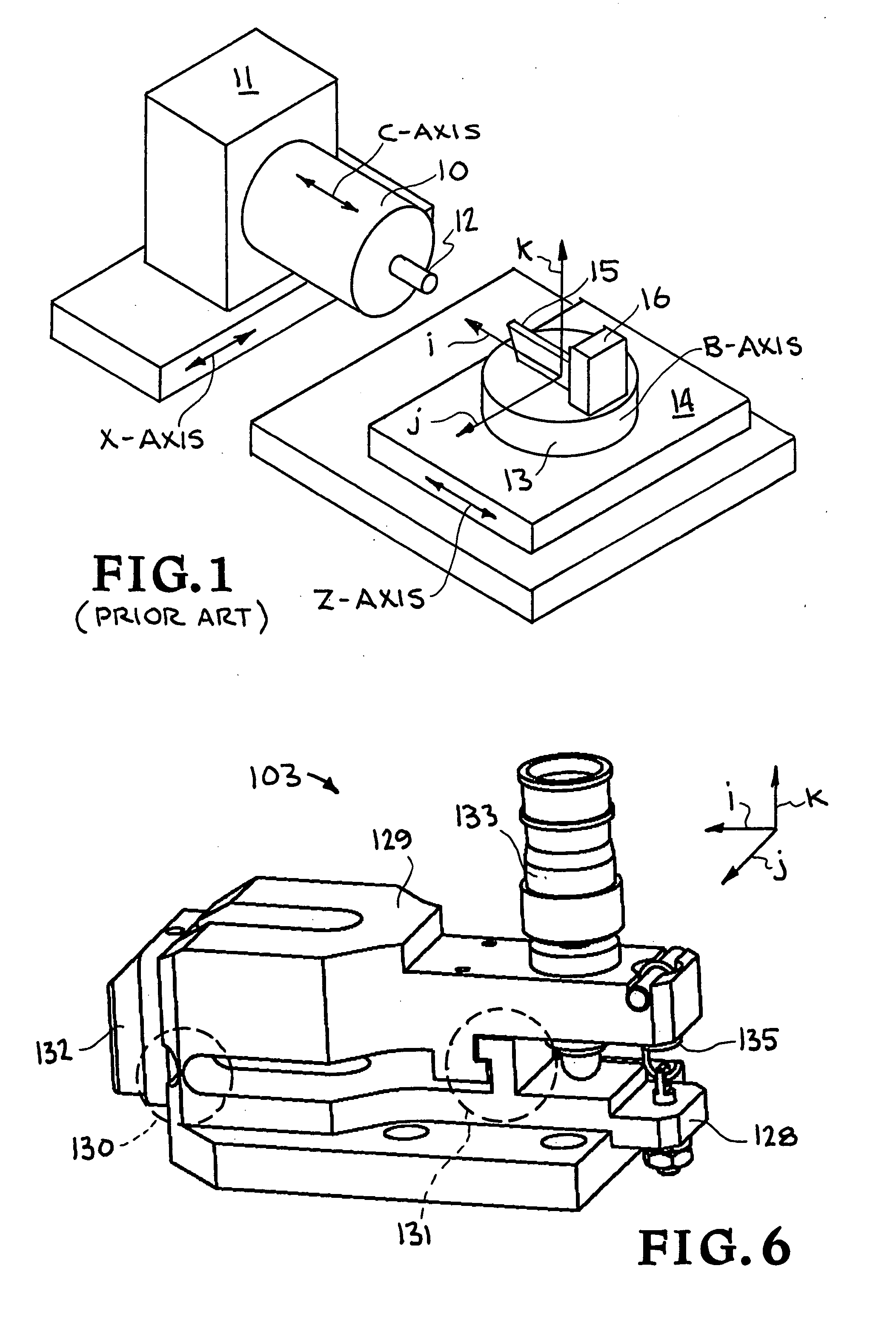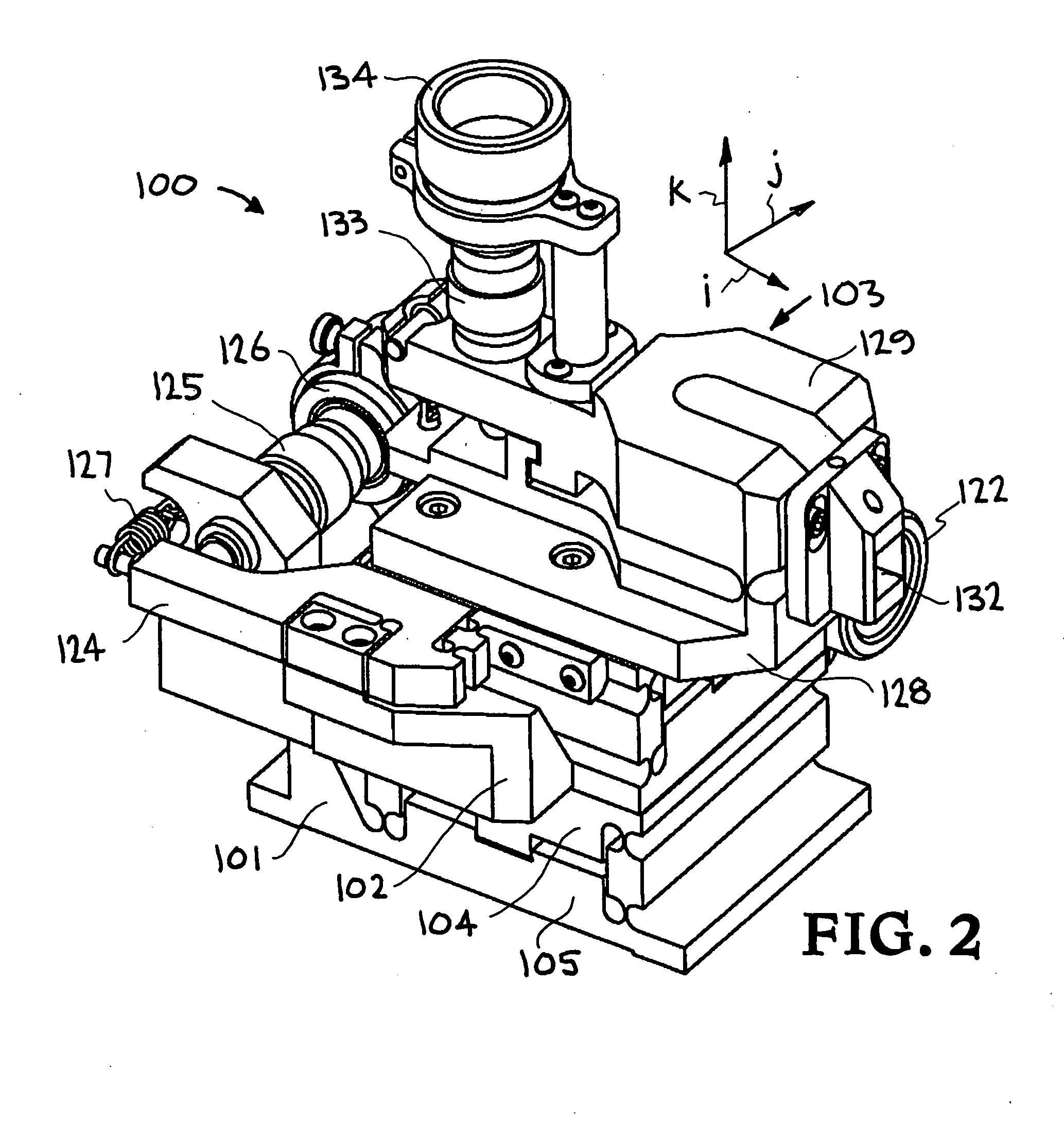Precision tool holder with flexure-adjusted, three degrees of freedom for a four-axis lathe
a tool holder and tool technology, applied in the field of machining tools, can solve the problems of large size, large accuracy of machined workpiece surface, and inability to adjust the flexure angle, etc., and achieve the effect of improving the accuracy of machined workpiece surfa
- Summary
- Abstract
- Description
- Claims
- Application Information
AI Technical Summary
Benefits of technology
Problems solved by technology
Method used
Image
Examples
Embodiment Construction
[0029] Turning now to the drawings, FIGS. 2 and 3 show isometric front and back views of an exemplary embodiment of the precision tool holder of the present invention, generally indicated at reference character 100, which facilitates the machining of precision meso-scale components with complex three-dimensional shapes with sub-μm accuracy on a four-axis lathe. Generally, the tool holder 100 includes three independently operable flexure-based adjustment mechanisms, indicated at 101-103, that allow adjustment of a tool in the three ijk orthogonal directions. The adjustment mechanism are stacked together to form three tiers or levels, with a first adjustment mechanism 101 shown at the bottom, a second adjustment mechanism 102 shown in the middle, and a third flexure-based adjustment mechanism 103 shown at the top. The first adjustment mechanism 101 is mountable directly on a rotary table (not shown).
[0030] Each of the three adjustment mechanisms 101-103 include a flexure assembly com...
PUM
| Property | Measurement | Unit |
|---|---|---|
| Degrees of Freedom | aaaaa | aaaaa |
| displacement | aaaaa | aaaaa |
| tensile yield strength | aaaaa | aaaaa |
Abstract
Description
Claims
Application Information
 Login to View More
Login to View More - R&D
- Intellectual Property
- Life Sciences
- Materials
- Tech Scout
- Unparalleled Data Quality
- Higher Quality Content
- 60% Fewer Hallucinations
Browse by: Latest US Patents, China's latest patents, Technical Efficacy Thesaurus, Application Domain, Technology Topic, Popular Technical Reports.
© 2025 PatSnap. All rights reserved.Legal|Privacy policy|Modern Slavery Act Transparency Statement|Sitemap|About US| Contact US: help@patsnap.com



